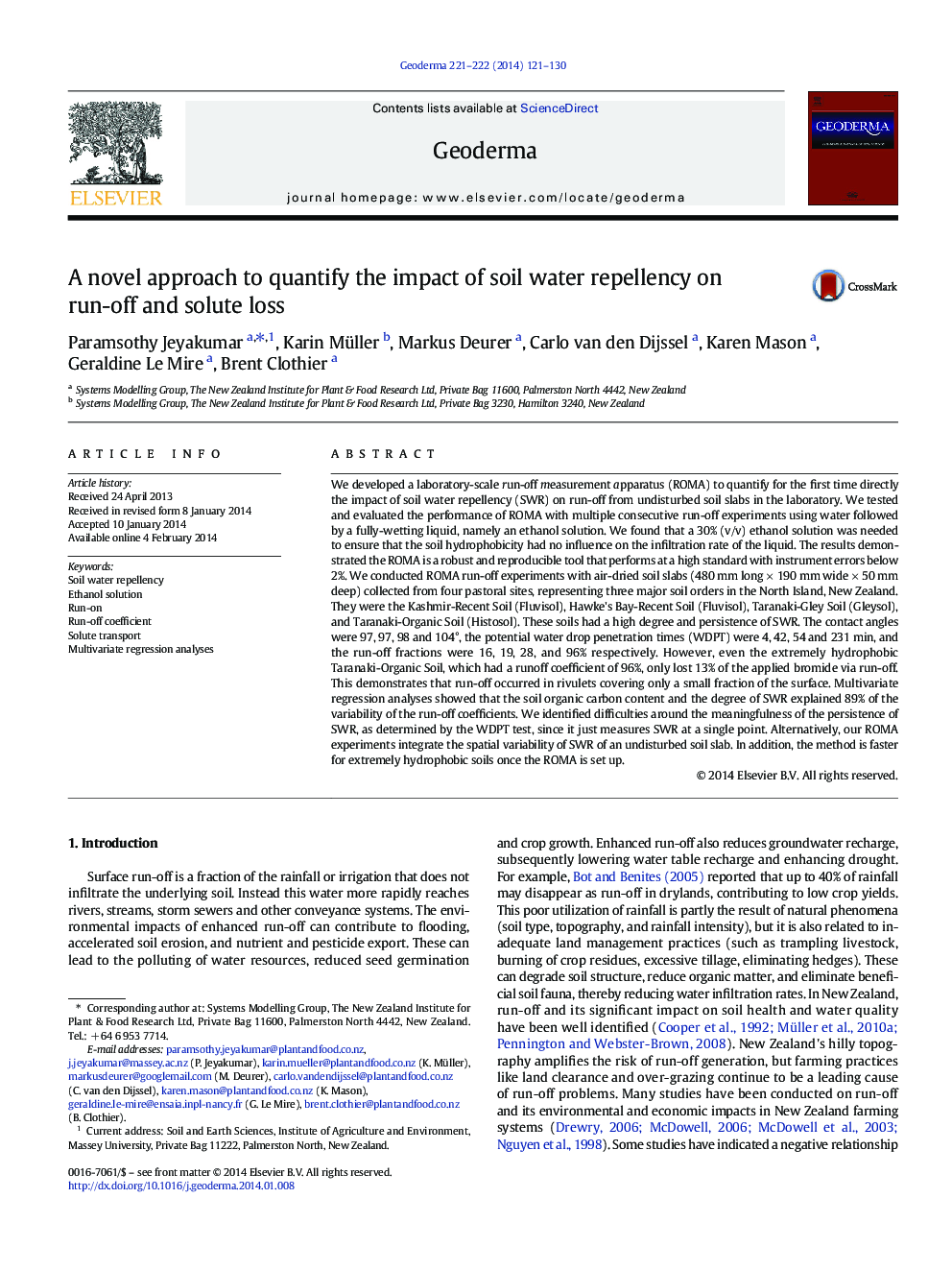| کد مقاله | کد نشریه | سال انتشار | مقاله انگلیسی | نسخه تمام متن |
|---|---|---|---|---|
| 6408824 | 1629474 | 2014 | 10 صفحه PDF | دانلود رایگان |
- We developed a run-off measurement apparatus (ROMA).
- ROMA quantifies the impact of soil water repellency (SWR) on run-off.
- 30% (v/v) ethanol solution ensured that SWR had no influence on infiltration rate.
- Soil C and the degree of SWR determined variability in the run-off coefficients.
- ROMA tests integrate the spatial variability of SWR of an undisturbed soil slab.
We developed a laboratory-scale run-off measurement apparatus (ROMA) to quantify for the first time directly the impact of soil water repellency (SWR) on run-off from undisturbed soil slabs in the laboratory. We tested and evaluated the performance of ROMA with multiple consecutive run-off experiments using water followed by a fully-wetting liquid, namely an ethanol solution. We found that a 30% (v/v) ethanol solution was needed to ensure that the soil hydrophobicity had no influence on the infiltration rate of the liquid. The results demonstrated the ROMA is a robust and reproducible tool that performs at a high standard with instrument errors below 2%. We conducted ROMA run-off experiments with air-dried soil slabs (480 mm long Ã 190 mm wide Ã 50 mm deep) collected from four pastoral sites, representing three major soil orders in the North Island, New Zealand. They were the Kashmir-Recent Soil (Fluvisol), Hawke's Bay-Recent Soil (Fluvisol), Taranaki-Gley Soil (Gleysol), and Taranaki-Organic Soil (Histosol). These soils had a high degree and persistence of SWR. The contact angles were 97, 97, 98 and 104°, the potential water drop penetration times (WDPT) were 4, 42, 54 and 231 min, and the run-off fractions were 16, 19, 28, and 96% respectively. However, even the extremely hydrophobic Taranaki-Organic Soil, which had a runoff coefficient of 96%, only lost 13% of the applied bromide via run-off. This demonstrates that run-off occurred in rivulets covering only a small fraction of the surface. Multivariate regression analyses showed that the soil organic carbon content and the degree of SWR explained 89% of the variability of the run-off coefficients. We identified difficulties around the meaningfulness of the persistence of SWR, as determined by the WDPT test, since it just measures SWR at a single point. Alternatively, our ROMA experiments integrate the spatial variability of SWR of an undisturbed soil slab. In addition, the method is faster for extremely hydrophobic soils once the ROMA is set up.
Journal: Geoderma - Volumes 221â222, June 2014, Pages 121-130
